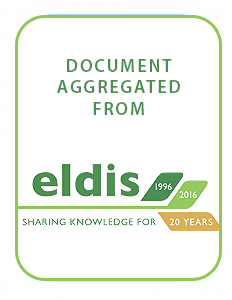Resource information
Explores how the institutions of property rights and collective action play a particularly important role in the application of technologies for agricultural and natural resource management.Technologies with long time frames tend to require tenure security to provide sufficient incentives for adoption, while those that operate on a large spatial scale will require collective action to coordinate. The conceptual framework presented in this paper shows how property rights and collective action interact with many other constraints to technology development, and is a guide for researchers and policymakers.The topics addressed in this paper are:factors influencing technology choicesthe indirect effects of technology adoptiontechnology, property rights and collective actionthe implications for efficiency, equity and environmental sustainabilityPolicy implications include: Strengthening local institutions of property rights and collective action increases the probability that people will use many of the new technologies for resource management. However, no single property regime is most appropriate for a particular technology in every instance. Even if it were, simply passing laws specifying the rights and responsibilities of individuals, groups, or government agencies is not enough, unless effective institutions exist to monitor and enforce those rights. Local law derived from a number of sources may have an equal or greater influence on actual behavior. The evolution of property rights must be understood as a process of institutional change, in which resource users themselves play an active roleCollective action cannot be dictated by outsiders. However, policies such as employing a cadre of institutional organizers have been effective in fostering local organizations for voluntary resource management activities. In Namibia, an organizng partnership of communities, non governmental organizations (NGOs), and the Ministry of Tourism and the Environment established participatory mapping systems and other institutions to jointly manage wildlife re sources. These organizers, who may work for an NGO, university, or government agency, spend time in communities encouraging local participation in both direct activities and in decision making about the structure of collective action. This approach has shown high returns in terms of adoption and sustainability of resource management practicesProperty rights over natural resources can provide an important policy tool for strengthening collective action in their management. Just as individuals are unlikely to invest in technologies unless they have secure tenure, communities can not be expected to adopt long- term practices if they lack long-term rights to the resource. Yet many governments have been unwilling to transfer rights to water, irrigation infrastructure, range lands, or forests when they devolve management responsibility to user groups. The issues of community rights and ways of creating new common property resources (in place of government ownership) are emerging as critical issues in devolution programs.A shorter, policy-maker focused version of this paper is also available in both English and Spanish



